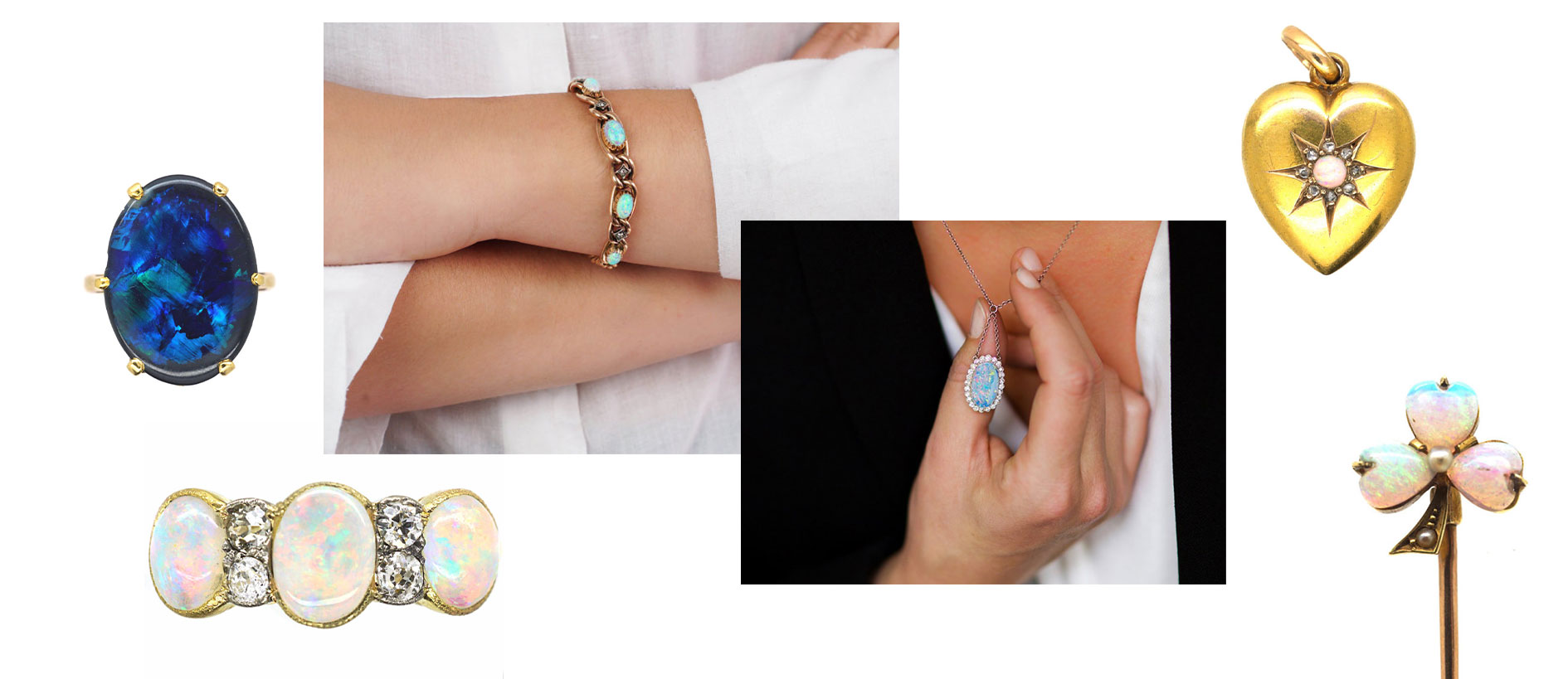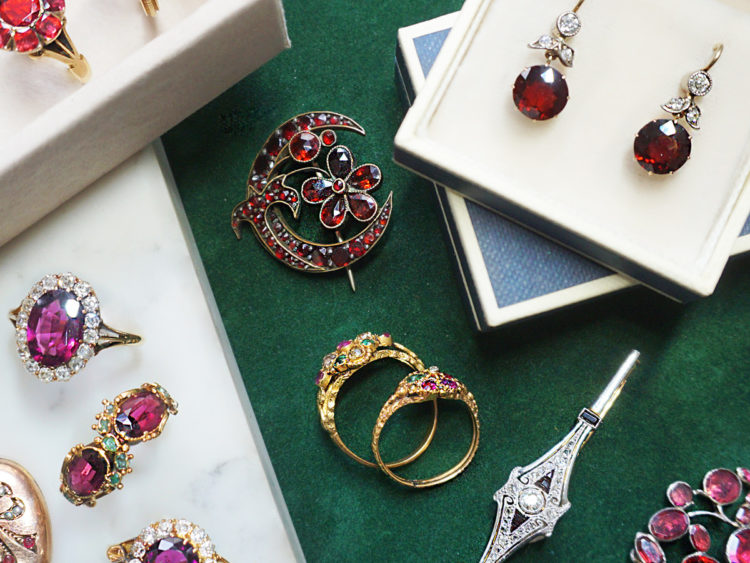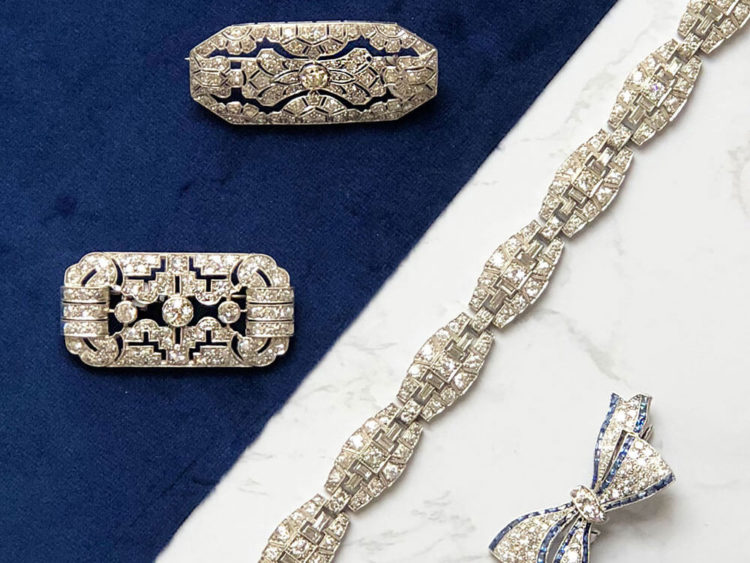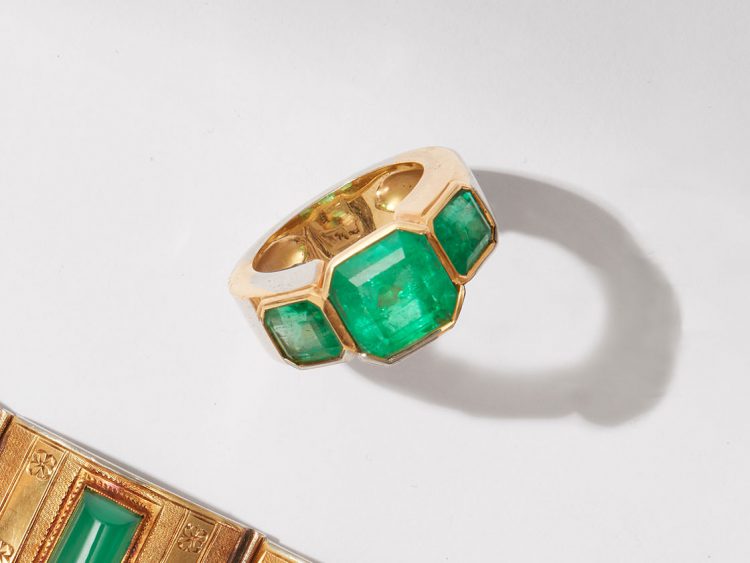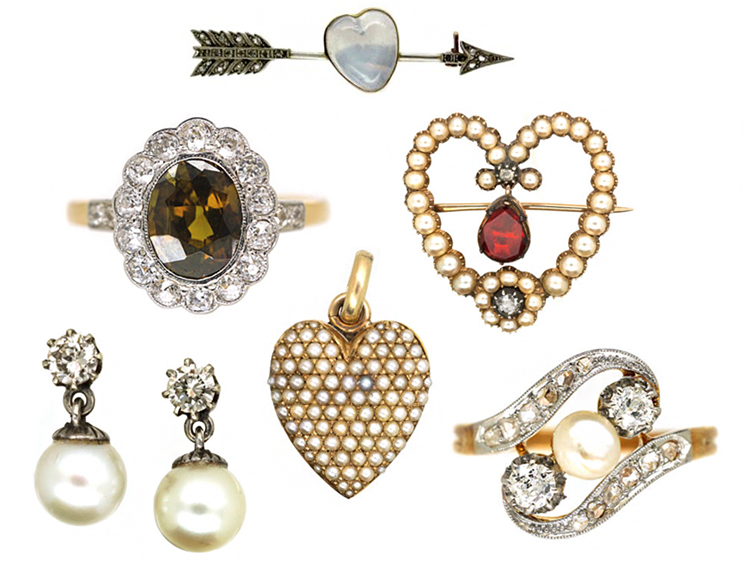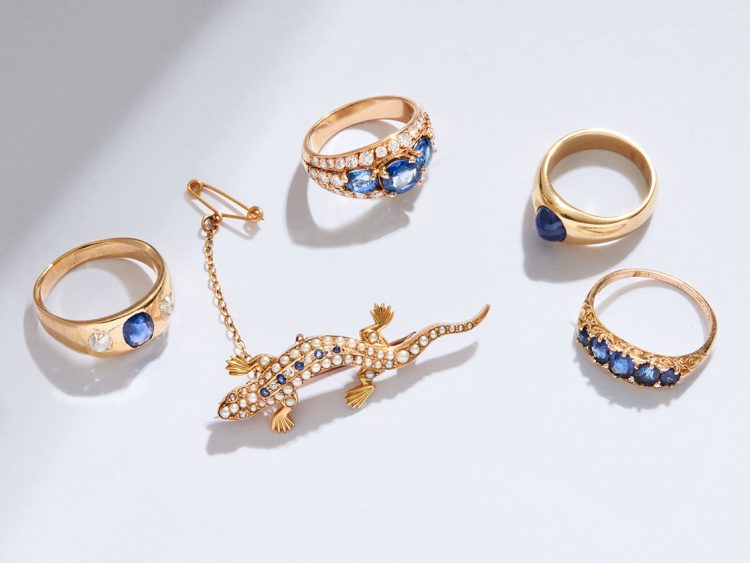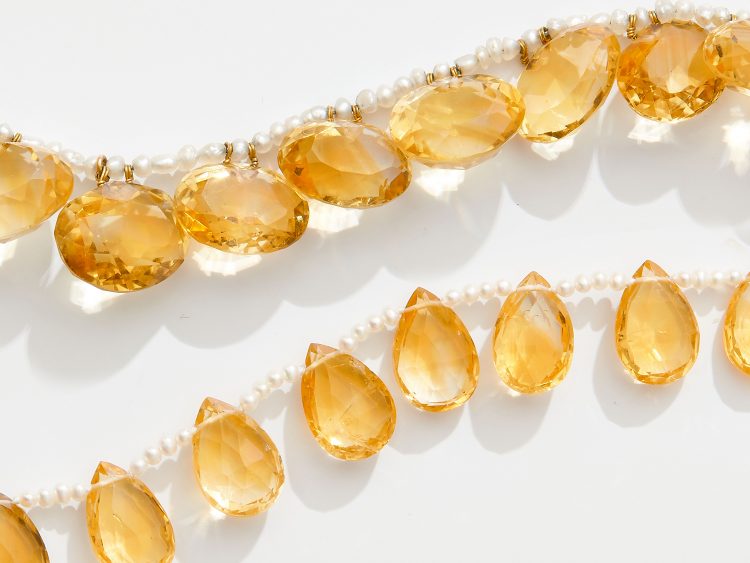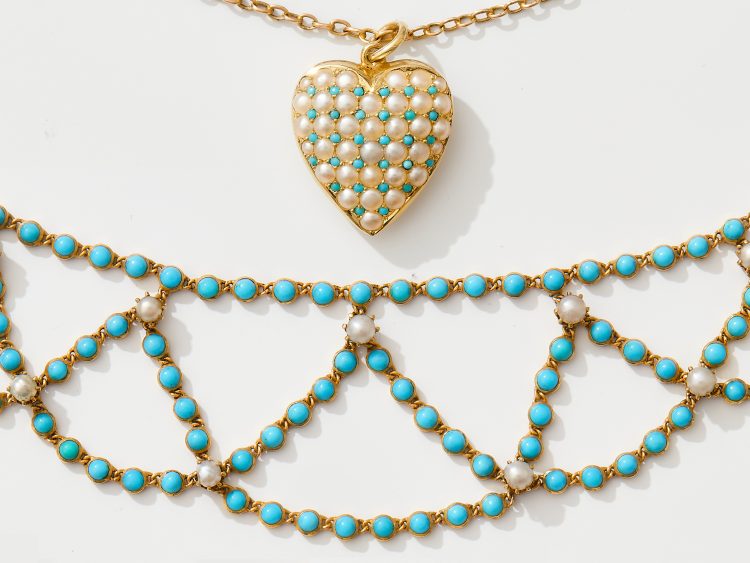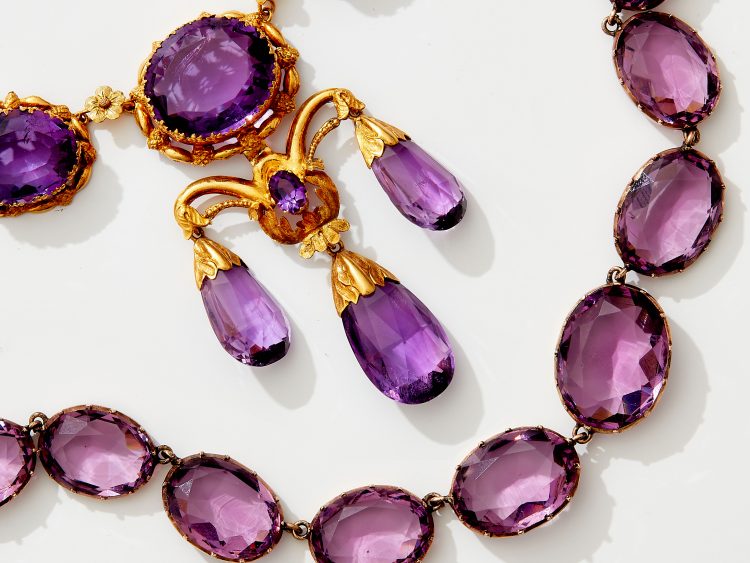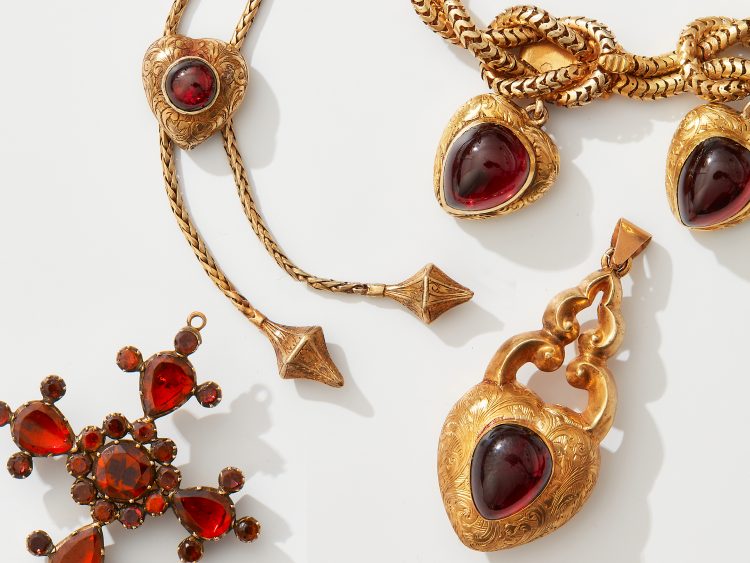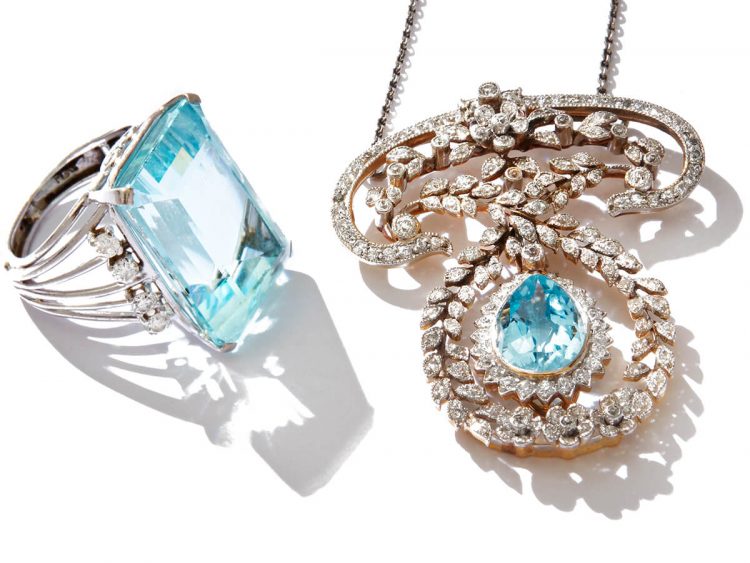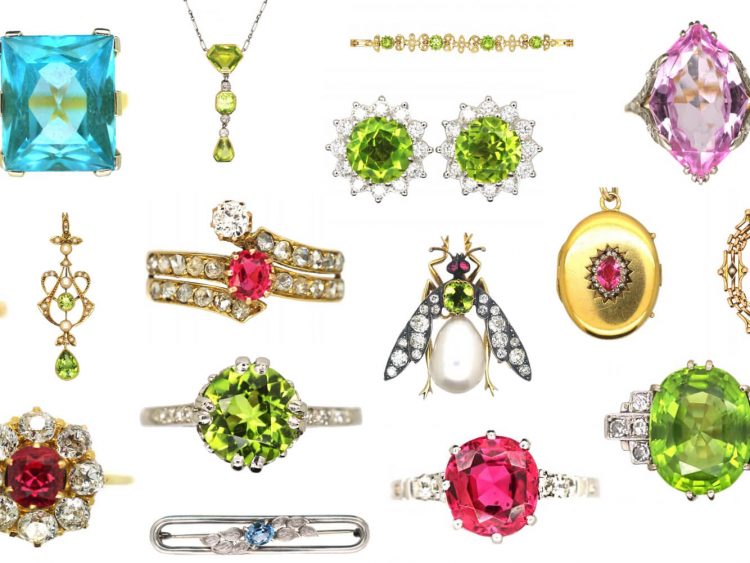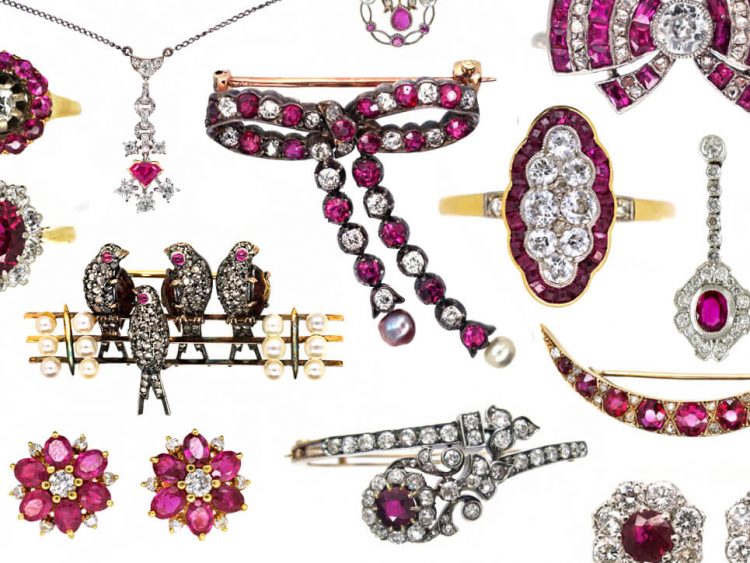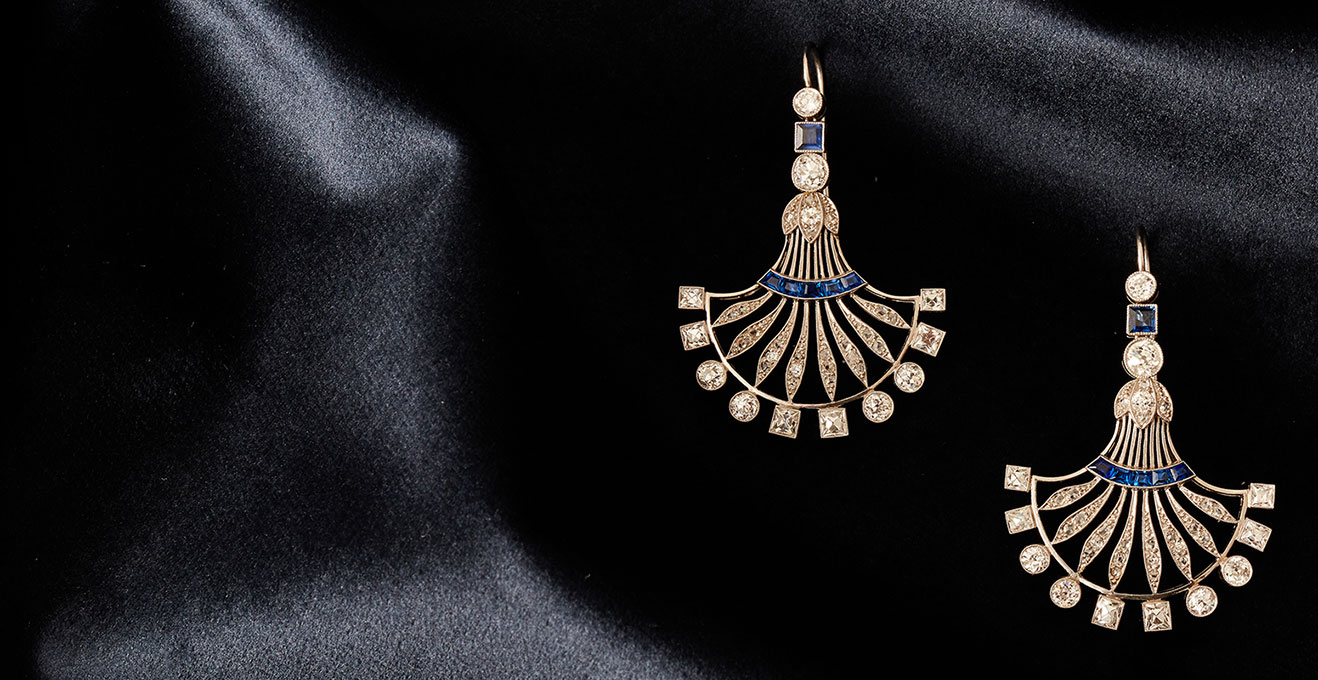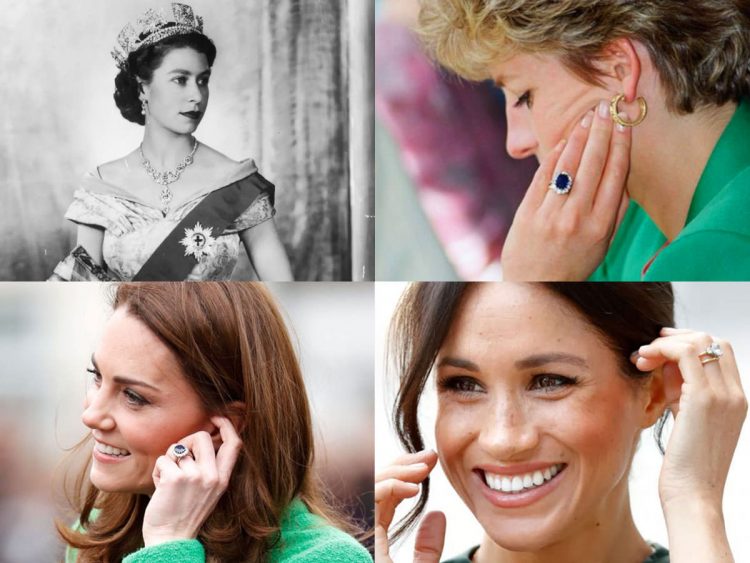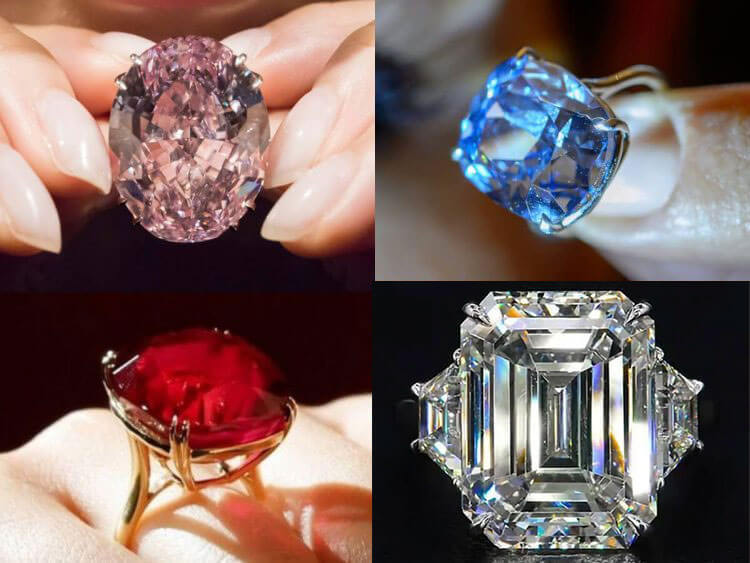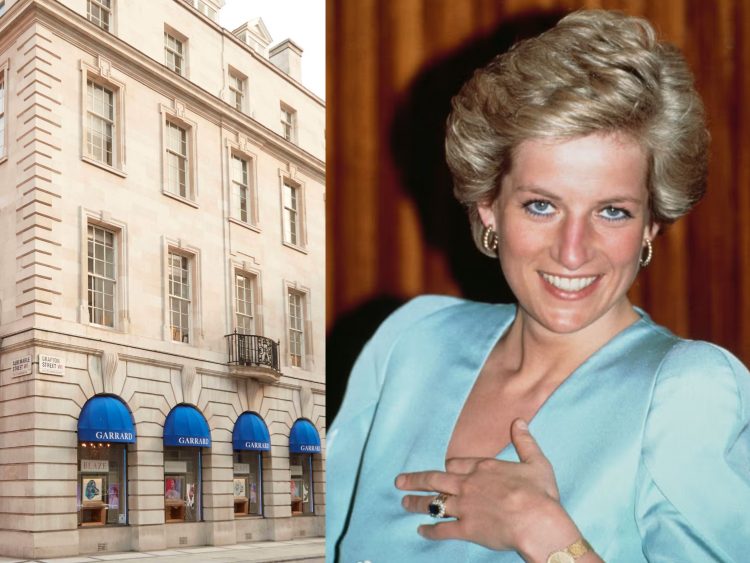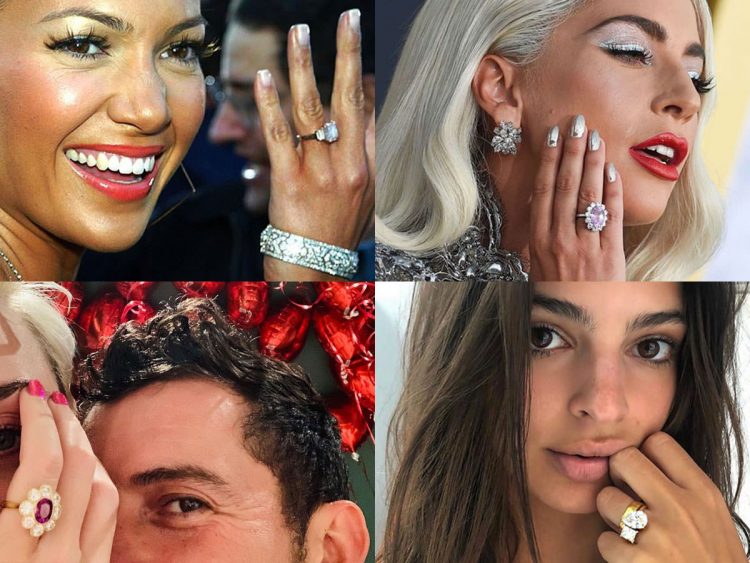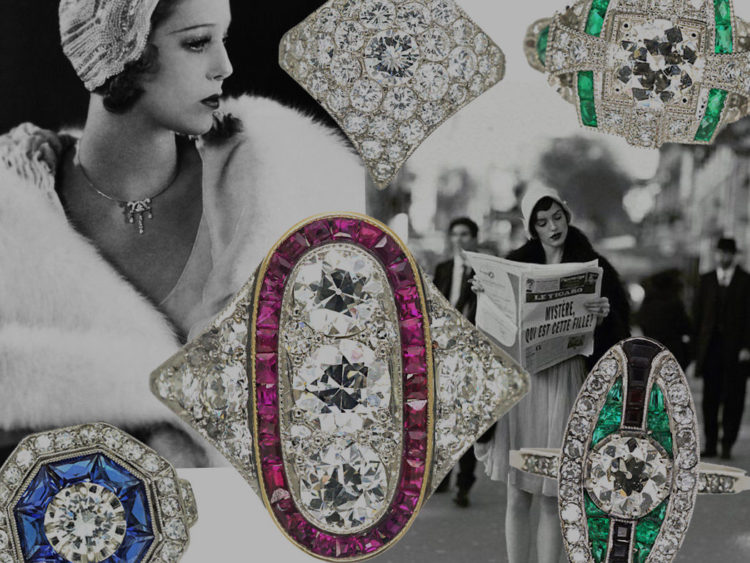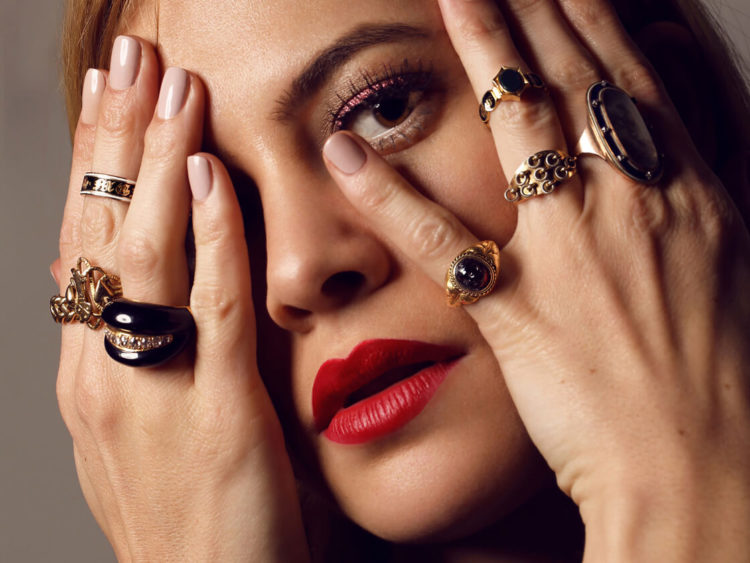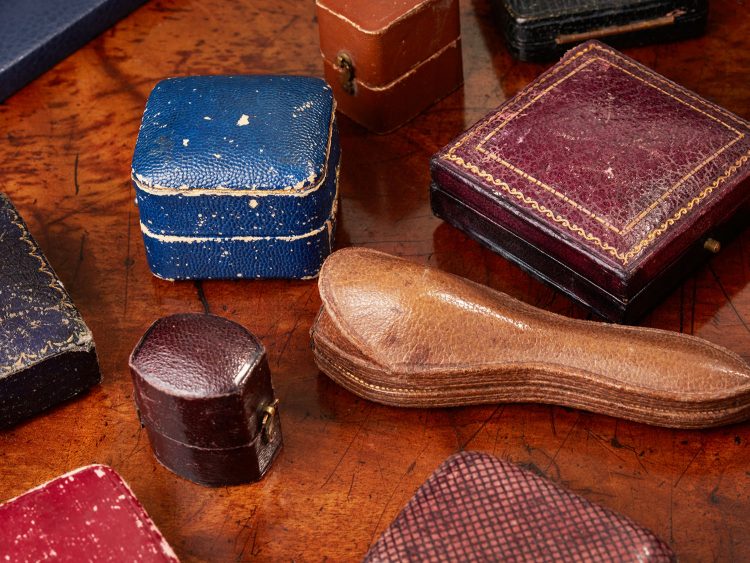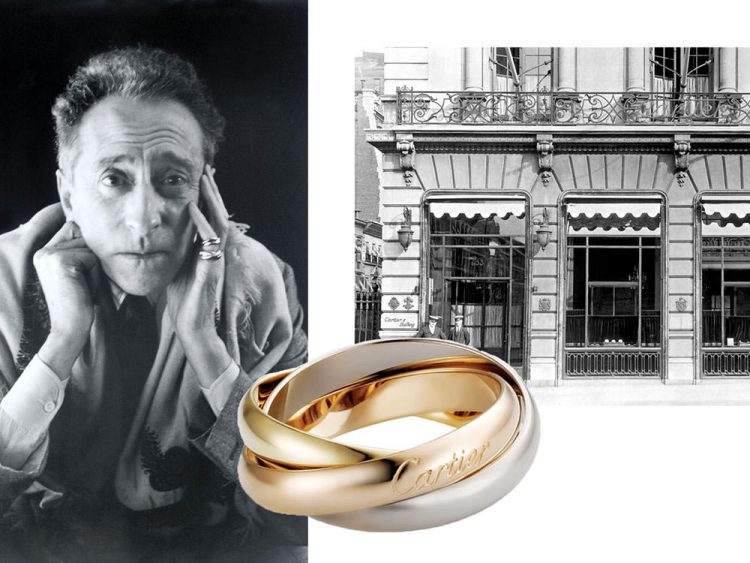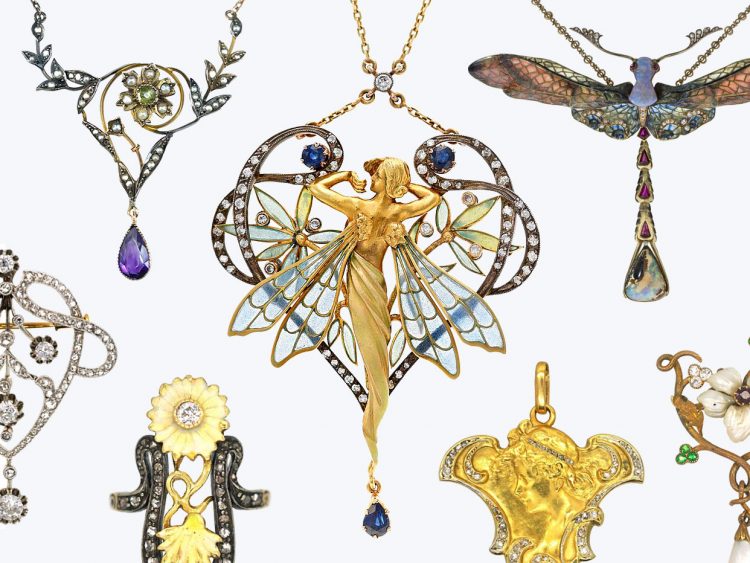-

Your Shopping Bag is empty
October Birthstone: Opal
For centuries October’s birthstone has been considered the gem of gems. Undoubtedly precious, the name opal literally derives from the word for “precious stone” in not one but two ancient languages (Latin, opalus, and Sanskrit, upala). Shakespeare even called Opal the “Queen of the Gems” in Twelfth Night. But what makes Opal so special?
In this guide, we answer why Opal is October’s birthstone (and the perfect present for October babies), and how Opal became the luckiest and then unluckiest of gems.
-Plus, it will give bonus tips on how to care for antique opal jewellery-
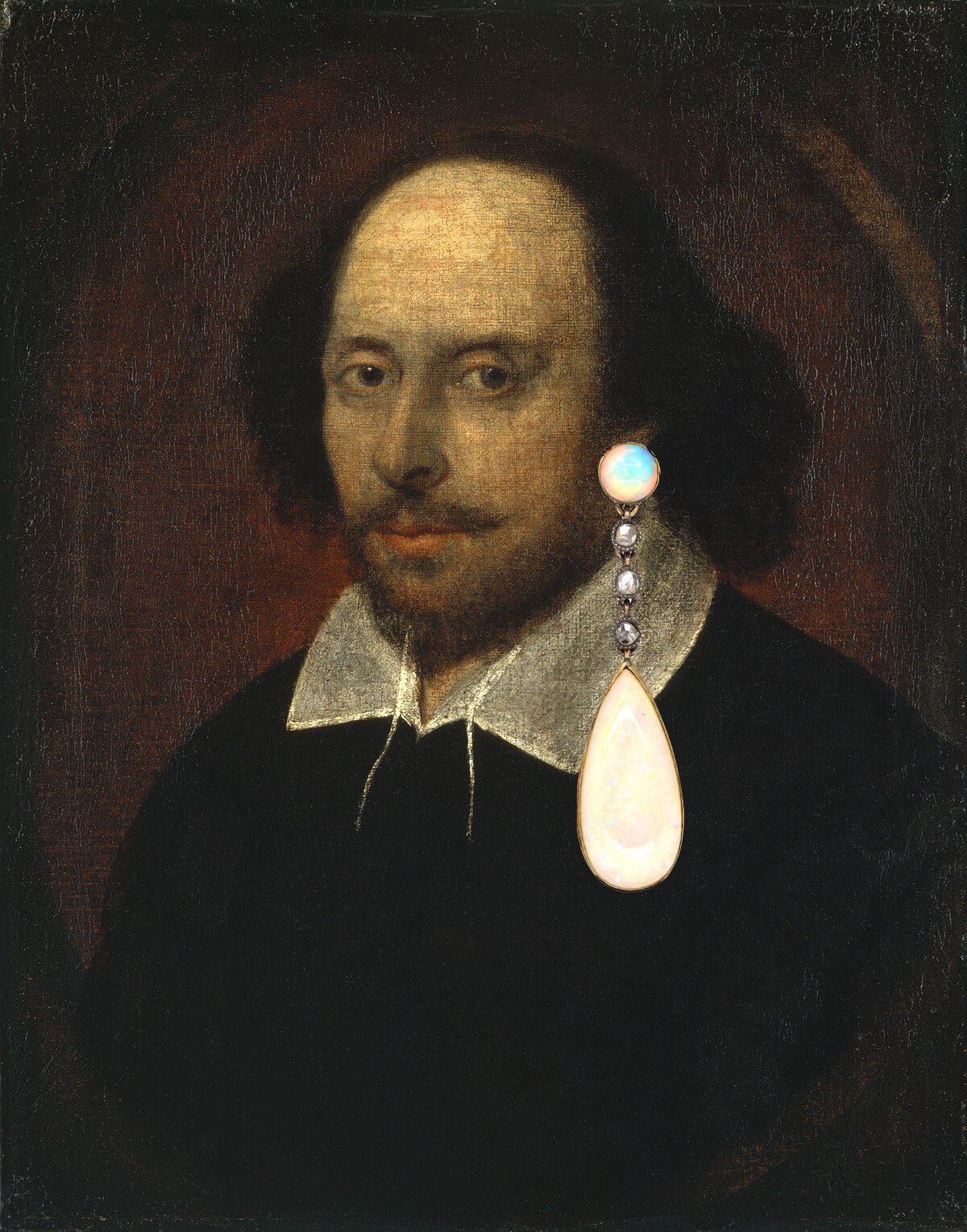
Why is Opal October’s Birthstone?
October is a month of changing colours. Leaves change their tone, we change our wardrobes, and even food takes on an autumnal hue with pumpkin soup and spiced lattes. So, of course, October’s birthstone changes colour too! October’s birthstone Opal displays a spectrum of shifting colours; vibrant reds, blues, greens, and yellows within a single gemstone.
As a month of transition, October is a month of change, hope, and superstition (Halloween, of course). Opal too has a rich history in superstition and is suitably a symbol of hope and positive change
Opal and October Libras
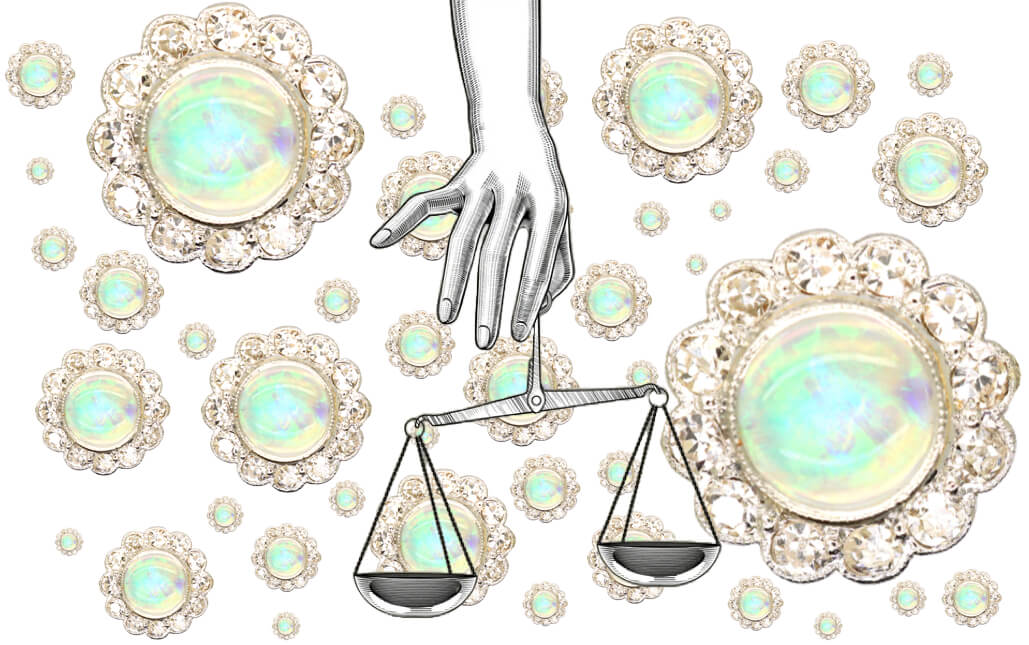
Represented by the scales Libra’s fixate on balance and harmony. They are the aesthetes of the zodiac. Ruled by Venus the planet that governs love, beauty, and money, Libras adore the finer things in life. They appreciate high art, intellectualism, and connoisseurship of beautiful objects.
The October birthstone is perfect for Libras. Opals harmoniously possess all the colours (and all the powers) of other gemstones. This is great for diplomatic Libras as they don’t have to pick one colour- they get them all. Plus when Libras wear opal jewellery all their positive traits are amplified.

The October birthstone also helps Libras with their flaws. Libras can be diplomatic to a fault; they become disingenuous to please others. Opal is an amplifier of (hidden) emotions. They bring inner desires or secret inhibitions to the surface. This helps Libras to assert their true desires and create genuine connections rather than fair-weather friendships. Opals also bring clarity to unclear decisions or feelings- a must for indecisive Libra.
October Scorpios and Opal
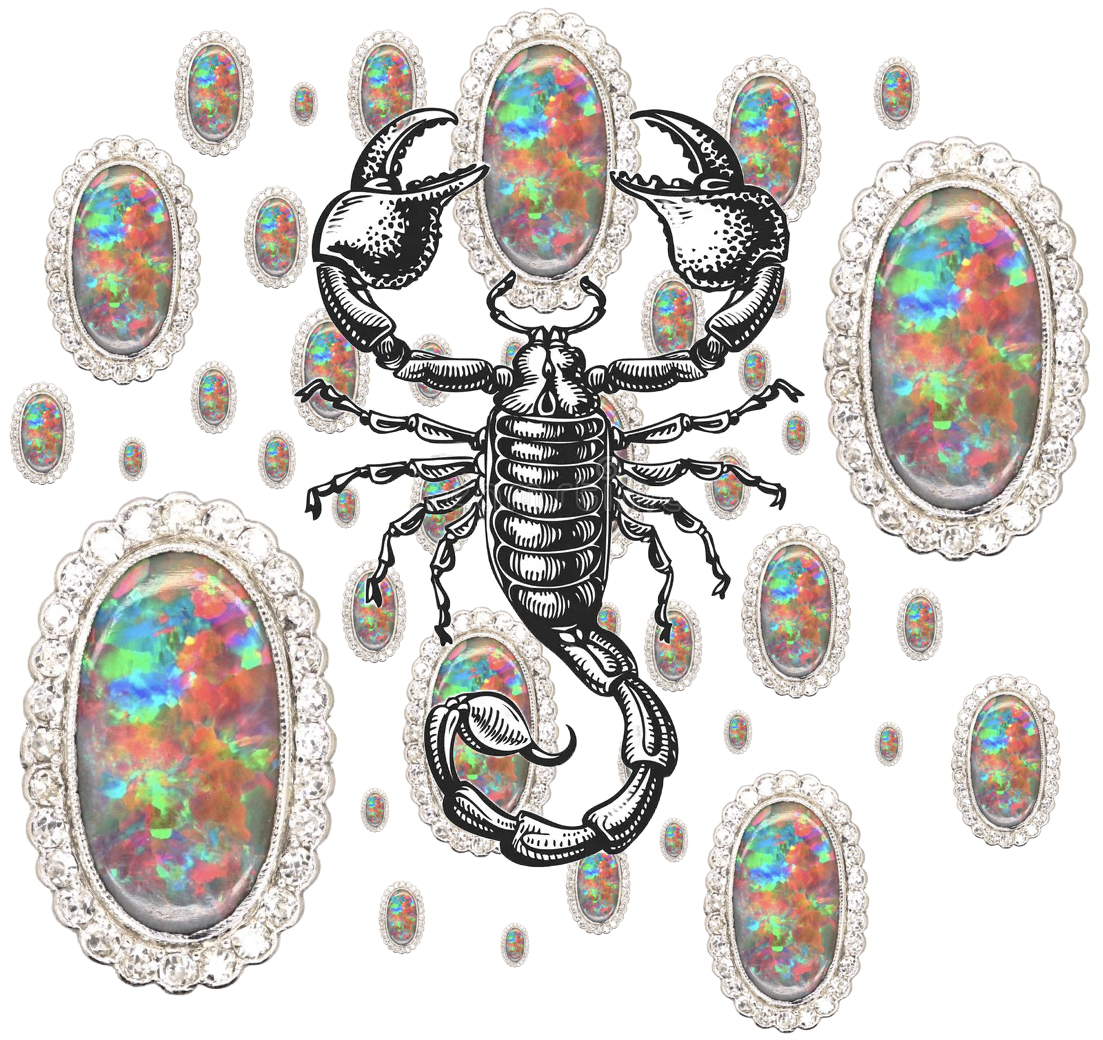
Scorpios are deeply emotional masters of intuition and insight. They never show their cards, making them seductive and beguiling. Opal’s inner fire reflects Scorpio’s piercing gaze and irresistible charisma. Black opals particularly reflect the sign’s mystery and power. Scorpios are interested in the deeper human experience from psychology to the occult. Opal’s rich history in the latter makes it a perfect present (more on this later).
Scorpio also possesses a nasty sting. This means they over-prioritise the attack and hold onto grudges. October’s birthstone reminds Scorpios to be aware of the negative thoughts and actions they send into the universe. Opal gemstones are also perfect for balancing the overpowering emotions of Scorpios.
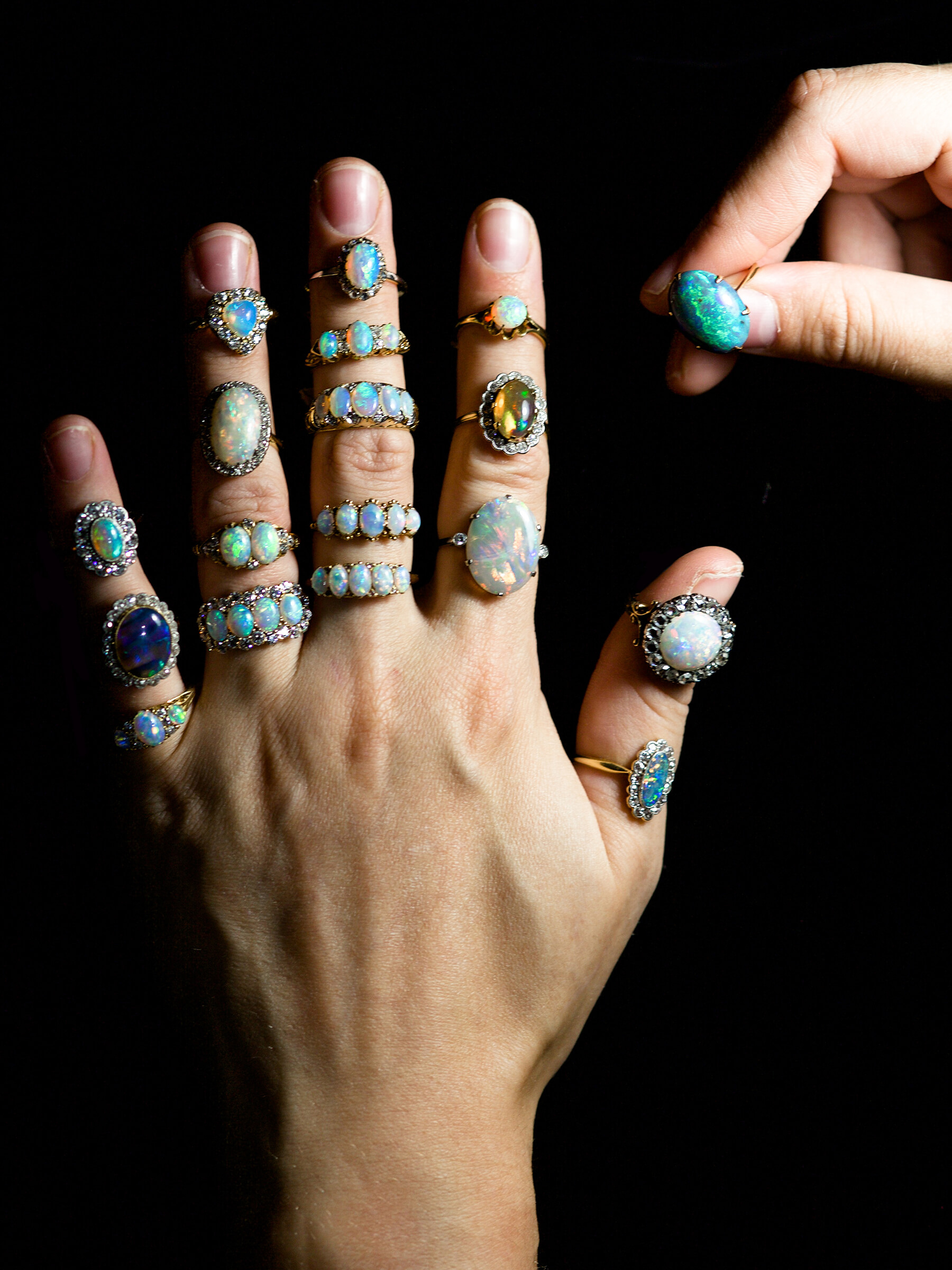
Plus, Opal is fortunate. White opal aids positive manifestation, especially for financial goals. This is because Opal’s inner fire or play-of-colour attracts forces that bring money. (Then again, the cost of precious opals alone points to having money). Another reason the October birthstone is perfect for both luxurious Libra and career-driven Scorpio
For information on other Birthstones checkout these:
- April’s Birthstone: Diamond
- May’s Birthstone: Emerald
- June’s Birthstones: Pearl, Moonstone & Alexandrite
- September’s Birthstone: Sapphire
Lucky or unlucky: the History of Opal
Ancient Romans believed October’s birthstone brought good luck and symbolised hope. Romans believed Opals were created by Zeus, king of the gods, when his tears touched the ground. Ancient Romans would stop at nothing to get their hands on an Opal. One Roman Emperor offered up one-third of his entire kingdom in exchange for a single gemstone.
Mark Anthony (of Anthony and Cleopatra) was so desperate to gift his lover Cleopatra one particular opal that he exiled a senator over it. Senator Nonious refused to sell Anthony the precious gemstone to escape exile. Nonius abandoned his house and family for the gemstone; “Nonius took to flight, carrying with him, out of all his wealth, nothing but this ring, the value of which, it is well known, was estimated at two millions of sesterces”- all that for an opal!
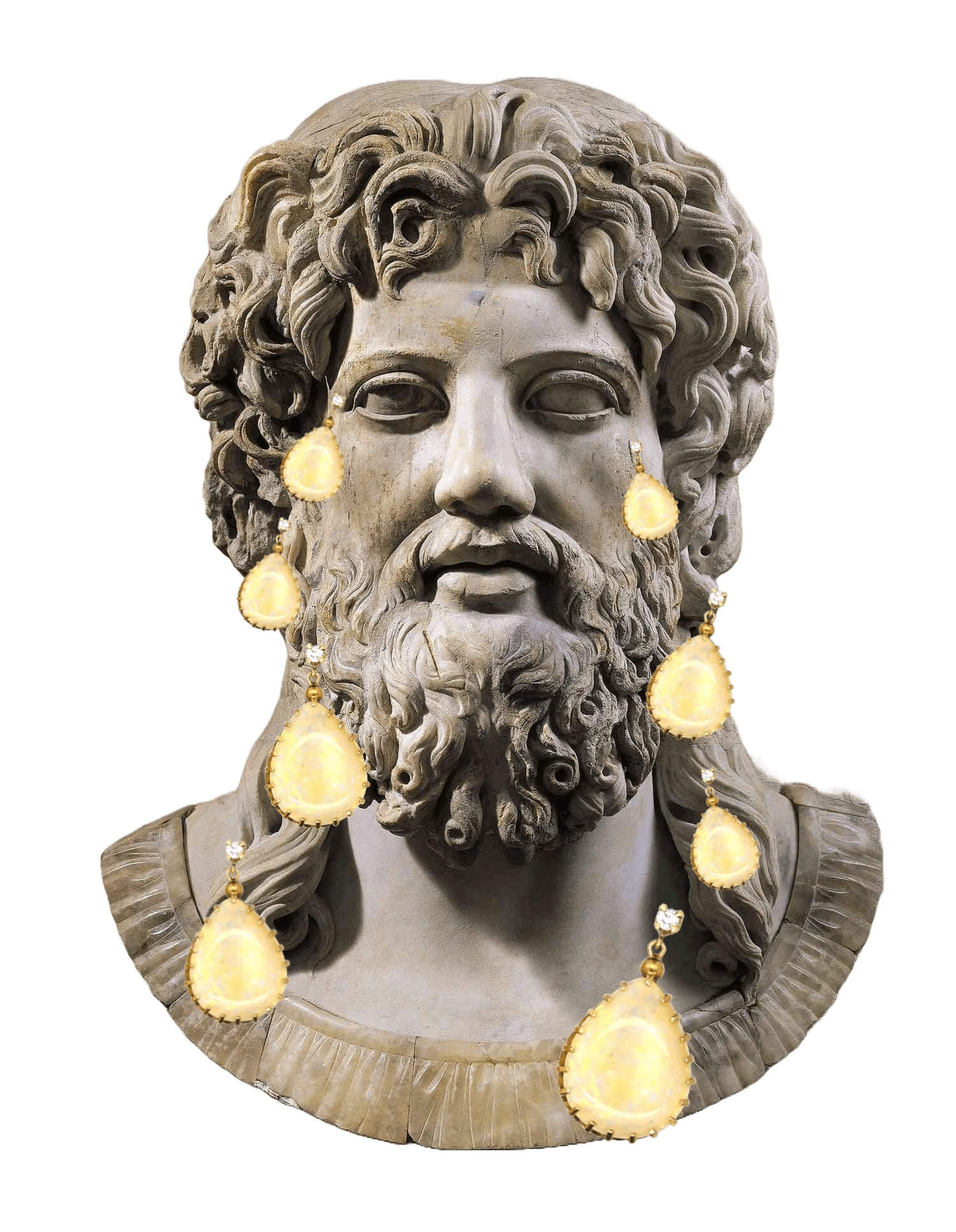
Mystical Opals in Medieval Times
In Medieval times October’s birthstone had two main qualities: luck and purity. Opals were extra lucky because they possessed the virtues of every gemstone whose colour it possessed (so all of them).
Opals were a talisman of purity. Worn to protect against failing vision and clouding memory. Opal was also a revealing stone, enabling its wearer to distinguish friends from foes with a change in its colour. This makes Opal a great talisman for any Libra.
On the other hand, Opal was thought to grant invisibility if wrapped in a fresh bay leaf and held in the hand. As a result, the October birthstone also became the patron gemstone for thieves —a perfect gift for mischievous Scorpio.
Plus medieval blondes would wear opals to maintain their hair’s beautiful shade. A pretty and functional gift for any natural -or dyed- blond!
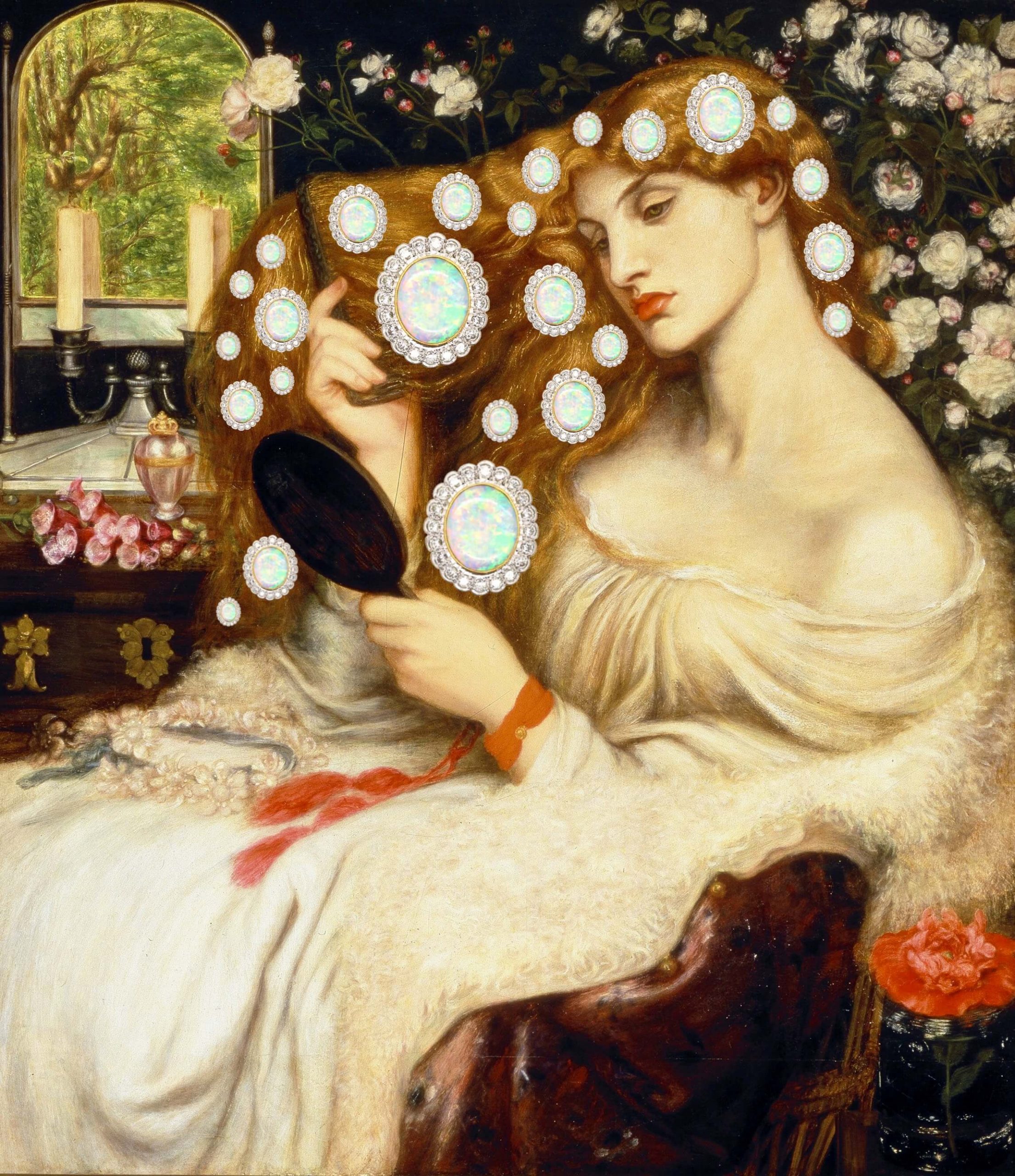
Opal-ling luck: The Fall of the Opal
Opals are sometimes unlucky in today’s culture. Don’t fret! This superstition only came about in the 19th Century- because of a book.
Sir Walter Scott released his novel Anne of Geierstein in 1829. In it, one of the characters dies when her opal hairpin gets wet. This made the reputation of October’s birthstone fall from wealth-bringer to death-harbinger. Opal sales fell by 50%. The Victorian public concluded that Opals are deathly unlucky and must only be worn by those born in October.
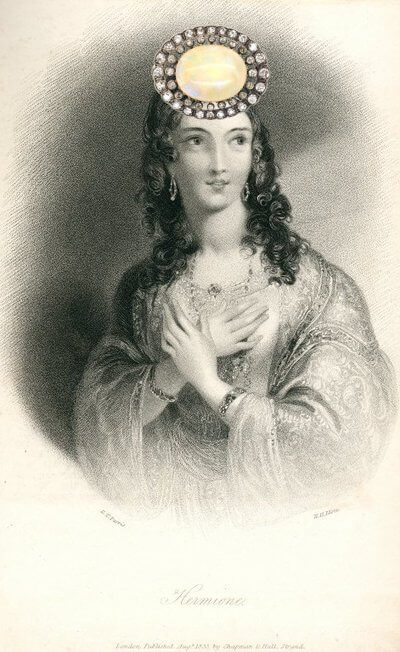
So do not fear October’s birthstone is only superficially unlucky- and NEVER for those born in October.
The “Queen of Gems” and the Queen of England
Queen Victoria showed all this hysteria to be ridiculous as the very successful and long-living queen wore Opal regularly. This put to rest any negative connotations of October’s birthstone. The gem regained popularity quickly as what Queen Vic did, people copied.
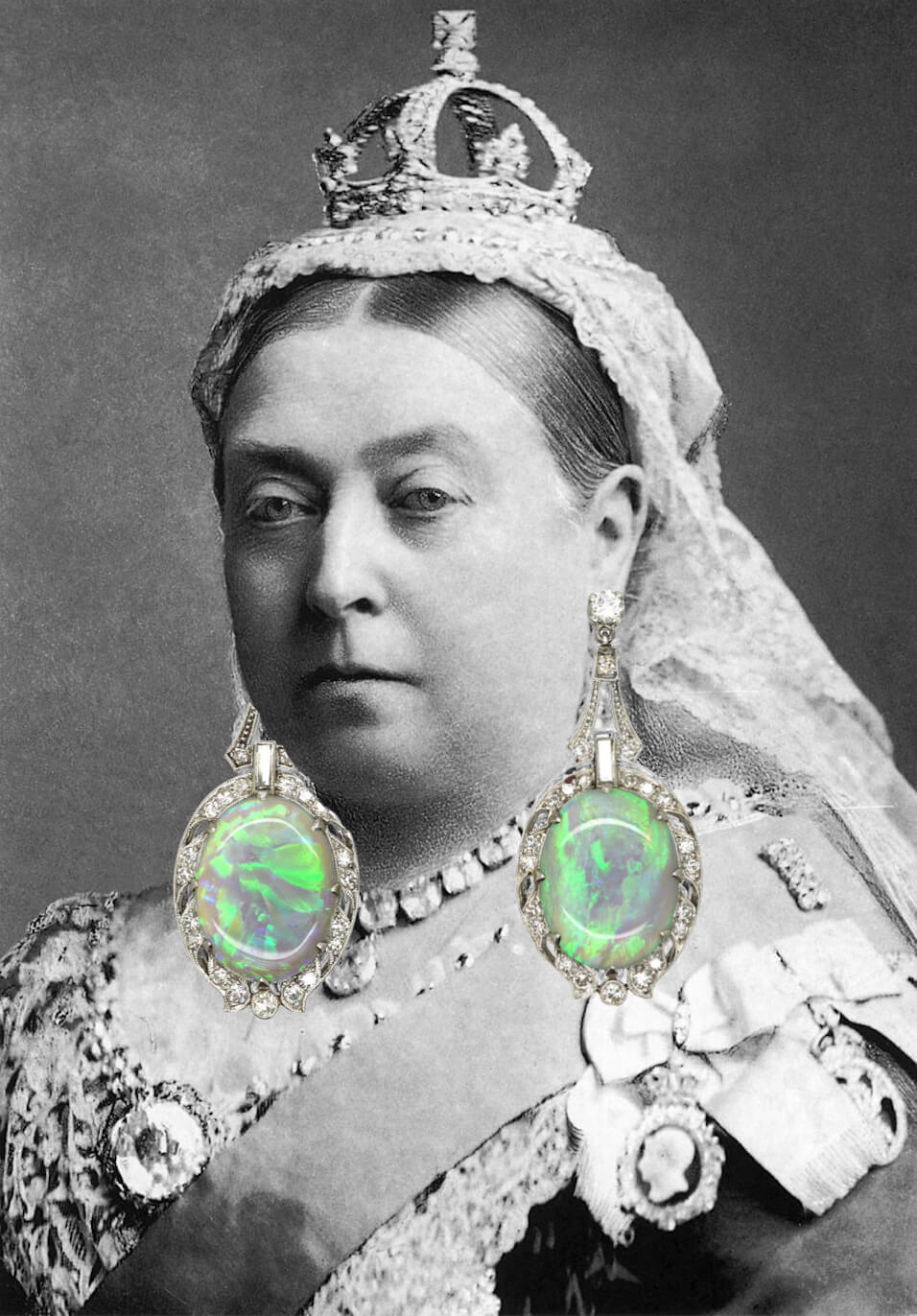
How does Opal get its colour?
Unlike most gemstones, Opal is a mineraloid. This means it doesn’t have a crystalline structure. Opal is formed from the silica gel that seeps into cracks in the earth. Over time, this gel hardens and forms Opal. This forms tiny silica spheres that diffract light. This produces a unique optical phenomenon; a spectacular display of colours known as “opalescence.”
Opal comes in various types, each with distinct characteristics:
Varieties of Precious Opal
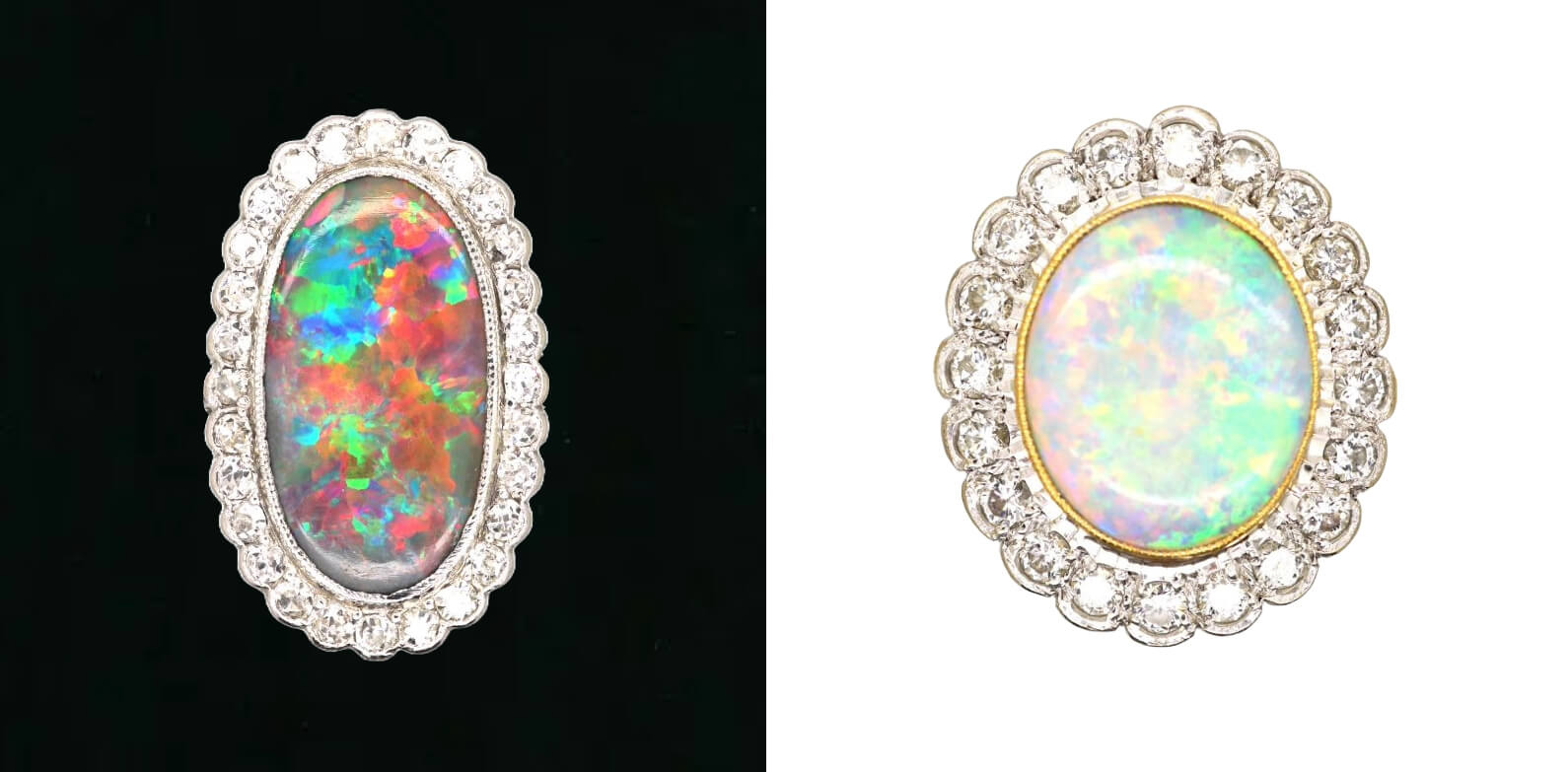
Precious Opal vs Common Opal:
Precious Opal exhibits vibrant shifting hues from different angles. It is the most sought-after variety and displays a spectrum of colours. Unlike precious opal, common opal lacks the play of colour and comes in more opaque pastels.
Precious Opal types:
Crystal Opal: This type is the one you’d be most familiar with. It’s whiter in appearance and transparent or semi-transparent. It showcases vibrant colours against a clear backdrop.
Black Opal: This type is the rarest and most valuable. It has a dark body that accentuates the opalescence. Most black opal is mined in Lightning Ridge, Australia.
Fire Opal: Characterized by its warm, fiery colours, ranging from yellow to red. While some fire opals show play-of-colour, many do not. Fire Opal was used by Aztecs and Mayans in ancient rituals and called “quetzalitzlipyollitli” or, “the stone of the bird of paradise.”
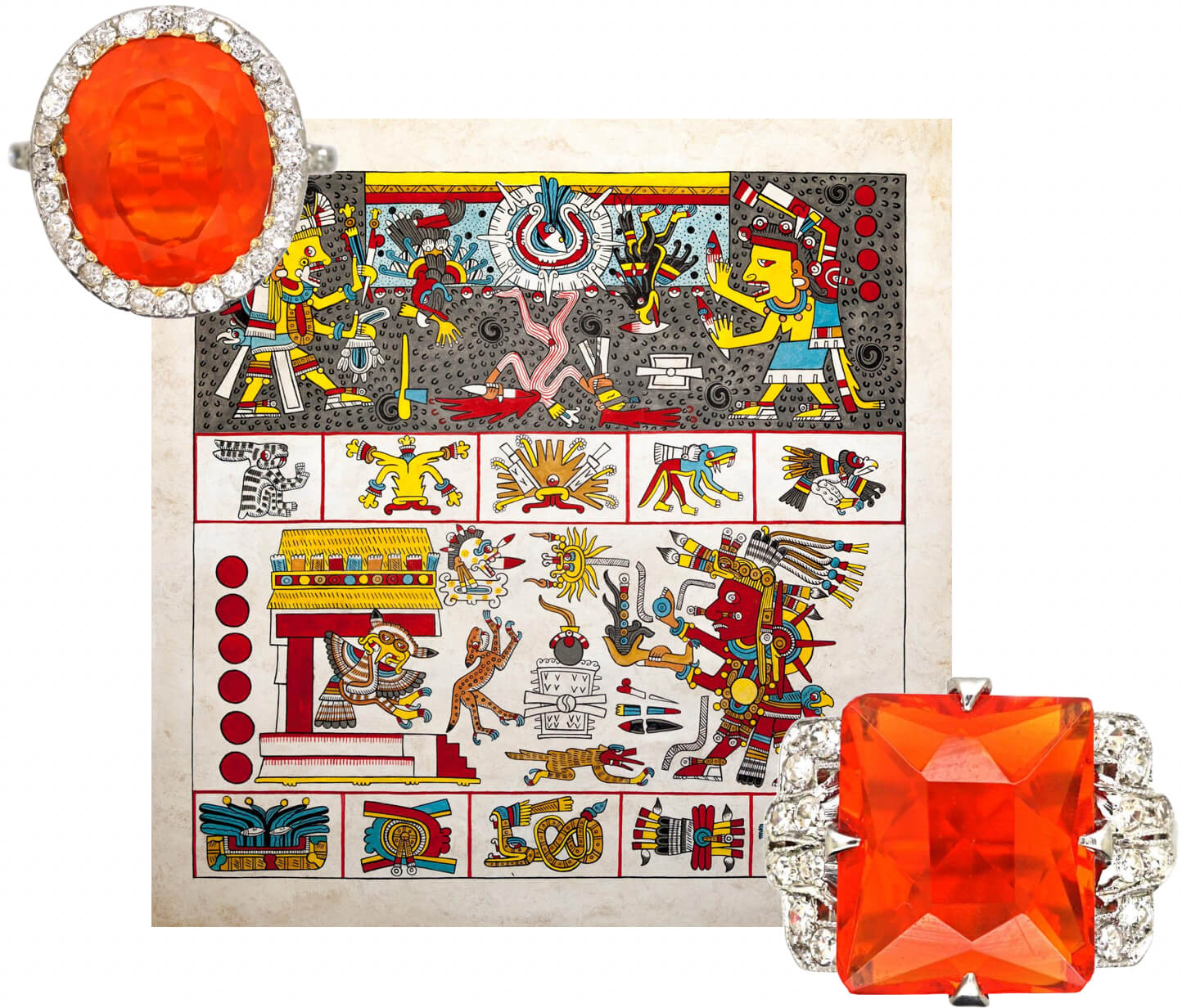
At The Antique Jewellery Company all our opal jewellery contains precious opal.
Care and Maintenance
Opals are relatively soft compared to other gemstones, with a hardness of 5.5 to 6.5 on the Mohs scale. They require special care to prevent scratching and damage. It’s advisable to keep opals away from harsh chemicals and extreme temperatures. Regular cleaning with a soft cloth and mild soap is recommended to maintain their luster.
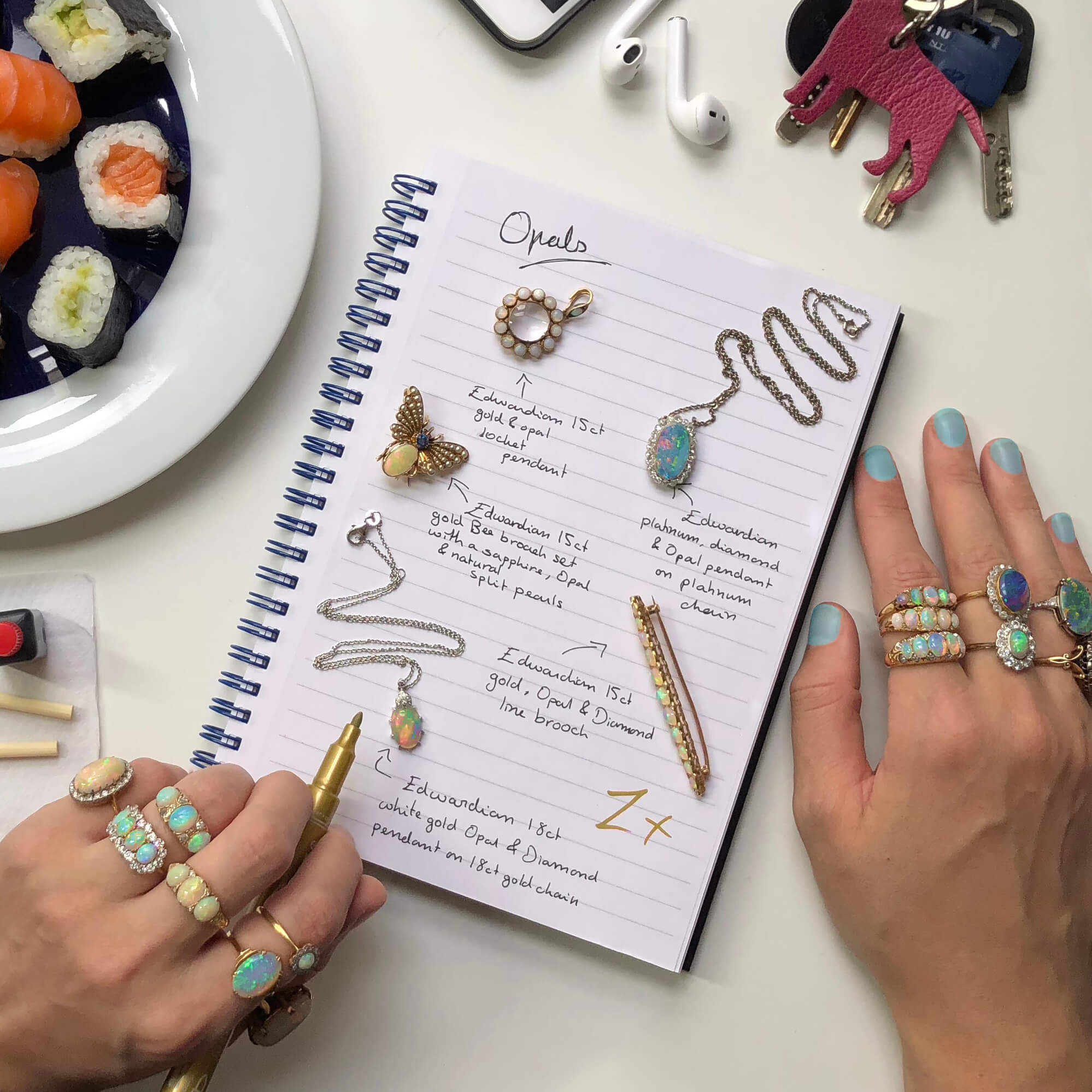



 Free Worldwide Delivery
Free Worldwide Delivery View All
View All
 Diamond
Diamond
 Sapphire
Sapphire
 Emerald
Emerald
 Ruby
Ruby




